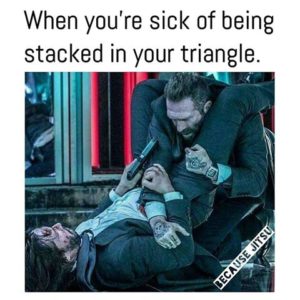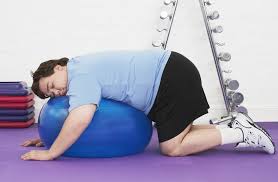I wrote this a few years ago and it still pretty much encapsulates my thoughts. i am re-posting it now because later in the coming week I am going to talk about why I list the areas of need in the order that I do. It should give people an idea of those things that I have found over the past 38 years to be the dominant things to train and why.
A couple of years ago, I wrote a post on the best Forum on the internet, Total Protection Interactive (www.totalprotectioninteractive.com) about what I thought was a good approach to trying to establish a solid and functional H2H self-defense game for the regular guy, who only had a small and finite amount of time to train. I wrote the following to give my perspective on how to make the right decisions.
I offer this up only as MY take on priorities in allocating training time for Practical Unarmed Combat (PUC), no one else’s. This is how I categorize it in my head to help with my own structuring. Take it for what it’s worth.
In order of importance, I would list the main skill sets as:
Area 1) Keeping from getting KTFO and efficient movement while vertical
Area 2) Dictating range, position, and attachment or un-attachment
Area 3) Groundwork
Area 4) Basic high percentage offensive moves
Area 5) Staying on your feet
Area 6) IFWA (in-fight weapons access) at contact distances
So where to train these and where do we get the material from?
For Area 1) Boxing/MT/Savate/MMA – these arts have methods/techniques that work under stress. They all have developed high percentage defenses and ways of moving. I have found most TMAs actually pay mostly lip service to defense. They all are much more focused on the cool offensive moves. And here lies my biggest issue with most combatives guys. They give almost no thought to defense, either in the technique or in flight time training. It’s why I give the thumbs up to very few combatives instructors.
For Area 2) Folk/freestyle wrestling, Greco, Judo, and MMA are the predominant arts here, but any art that has any legit grappling will have some validity. This is essentially clinch work, but unfortunately since so few people actually train it, few understand what it entails. Clinch DOES NOT always mean you are attached. It simple refers to the general range where each participant can easily attach. The person who controls this aspect can also control the range, the relative positioning, and when the space can open up to longer range. In doing so, you can go a long way towards controlling the fight and winning (surviving).
For Area 3) I think BJJ is the highest expression of groundwork in that it works for everyone regardless of physical attributes, but judo, sambo, western wrestling, and MMA are terrific as well (with the understanding that there are some weakness’ with those arts).
For Area 4) This should be good solid material that can be relied on over and over again. There are a lot of arts you can choose from here but the best are: boxing/MT/savate/MMA/combatives. The general thought behind this choice should be what are the highest percentage, most robust, and easily maintained functional techniques?
For Area 5) There are a myriad of reasons a fight might go to the ground, many of which you have no control over. It is a good idea to try to ensure you are as well versed as possible in those areas where you do have control. So it makes sense that the arts that have the highest level of functional takedown ability have the highest development of countering those takedowns. It is hilarious to me to see someone showing how to defend a takedown by demo-ing against someone who has never taken someone down in their lives. Not exactly the best way to ensure your stuff actually works. Try against someone who spends a lot of time training it for real. So we are back to folk/freestyle wrestling, judo, sambo, and MMA.
For Area 6) I placed IFWA here because good IFWA is so dependent on the prior skills. While you do have to put in dedicated training time to this area, IMO it should only be done after you have a reasonable grasp of 1-5. Otherwise, you will find you have a lot of holes, and you will waste time trying to reinvent the wheel , i.e. you won’t know what you don’t know.
Caveats and considerations in training:
Just because these components are listed in this order of importance does not necessarily mean that is the order you should train them in. There are many factors to consider.
First, what is available to you? It would be stupid of me to tell someone to go do BJJ if all they had around them was a guy who got his blue belt online and has never trained with a high level instructor. Or if that gym by your office advertising MMA was actually run by a guy whose background was only kenpo and another guy who was a joke as a blue belt. If the choice is between a top judo program and someone teaching Muay Thai who has never really sparred, then go with the legit program.
Second, some things are much harder to come by. Finding a real wrestling program is like winning the lottery. And arguably the majority of MMA gyms have a low level of clinch work, and often really crappy BJJ. If you find something that is harder to come across, you should most likely jump at that before it is gone.
Third, some of these things are easier to develop a decent level in than others. For example, it takes only a few months to get good at DEFENSIVE clinch work. It takes years and years and thousands of hours of flight time to get decent at OFFENSIVE clinch work, but defensively it is quick to learn to negate what the other guy is attempting. So if you are looking for a functional level, you might only need say six months of focus in this area (you still need maintenance and understand you only have a piece of the overall clinch game). I would say the same thing in regards to learning to not get KOed. Six months of implementing those defensive skills against resisting opponents who are actually trying to hit you will go a long way towards internalizing that skill set. Other skills take much longer. Groundwork for example is the most complicated and chaotic part of H2H.
And finally, some things have a better bang for the buck. If you are studying a system that covers a bunch of things, you are being more efficient. As an example, most people don’t realize it, but BJJ trains your clinch extremely well. A closed guard or butterfly guard game requires the same general techniques that a standing clinch game does. But because BJJ is generally done in a horizontal manner, people fail to mentally translate that to the vertical plane. And if you are lucky enough to train at a BJJ school that has a strong stand up/judo game, it is even better.
So, taking these things into consideration, you can decide how to prioritize it for yourself. Do you want to focus on the things that require less time, get solid at those, and then tackle the longer harder skills (BJJ, IFWA, counter takedowns), or do you want to get a jump on those ASAP since they do take such a long time to functionalize? Only each individual can answer what is the best path.
As for the question of BJJ being a good fit in a gun/knife context – If it is a good idea in an empty hand situation, it is good in a weapons situation. While there are things you need to tweak, BJJ is a must for a weapon grapple. Period. Those who go through ECQC with a solid BJJ base are FAR ahead of those who don’t have that base. It has been proven time and time again.


